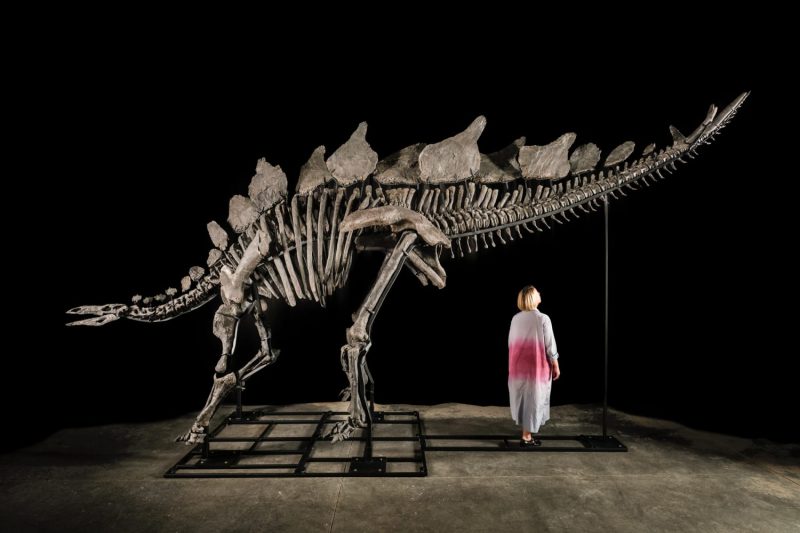In a jaw-dropping turn of events in the world of high-end collectibles, billionaire investor Ken Griffin recently made headlines by acquiring a rare stegosaurus fossil for a staggering $45 million in what is being hailed as a record-breaking auction sale. The purchase of this prehistoric artifact represents a significant milestone in Griffin’s passion for acquiring unique and valuable pieces for his renowned art collection, which spans across diverse genres and eras.
Griffin’s acquisition of the stegosaurus fossil is a testament to the growing trend of ultra-wealthy individuals investing in alternative assets such as rare fossils, artwork, and other collectibles. This emerging trend not only reflects a shift in traditional investment strategies but also underlines the increasing intersection between art, science, and finance in the modern world.
The stegosaurus, a herbivorous dinosaur known for its distinctive double row of bony plates along its back and tail, is one of the most recognizable and iconic creatures from the Jurassic period. The specimen acquired by Griffin is exceptionally well-preserved, making it a highly sought-after and valuable addition to any collection. Its sale price of $45 million sets a new benchmark for the market value of dinosaur fossils, reflecting the growing demand among elite collectors for rare and unique pieces of natural history.
In addition to its intrinsic scientific and historical value, the stegosaurus fossil holds immense cultural significance as a symbol of our planet’s ancient past. By investing in such artifacts, collectors like Ken Griffin are not only acquiring valuable assets but also contributing to the preservation and appreciation of our natural heritage for future generations. The display and public exhibition of these fossils can inspire curiosity, awe, and a deeper understanding of the Earth’s rich and diverse history.
The acquisition of the stegosaurus fossil by Ken Griffin is also a reminder of the ethical and legal considerations surrounding the trade and ownership of rare artifacts. As awareness of issues such as cultural heritage protection and repatriation grows, collectors and institutions are increasingly expected to uphold ethical standards in their acquisition and display of cultural and natural treasures. Responsible ownership and stewardship of such artifacts are crucial in ensuring their preservation and continued accessibility for study and appreciation.
Ultimately, Ken Griffin’s purchase of the stegosaurus fossil for $45 million represents more than just a financial transaction; it is a statement of commitment to the pursuit of knowledge, beauty, and history. As the boundaries between art, science, and finance continue to blur, high-profile acquisitions like this serve as a compelling insight into the evolving landscape of luxury collectibles and the enduring appeal of the ancient and extraordinary in today’s world.
